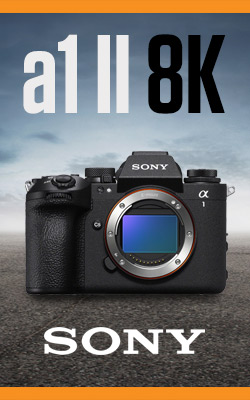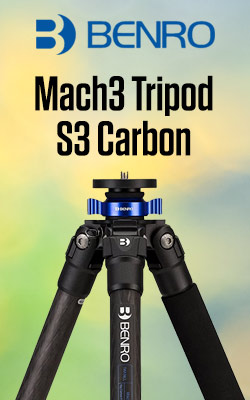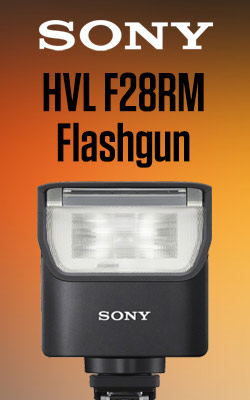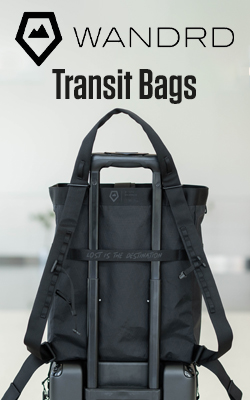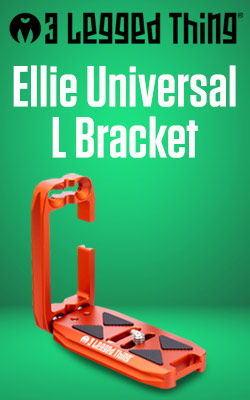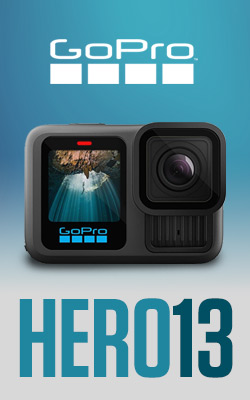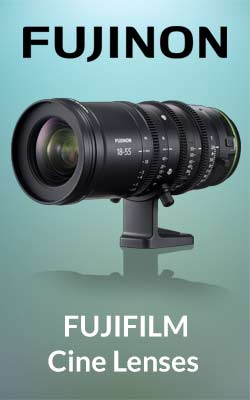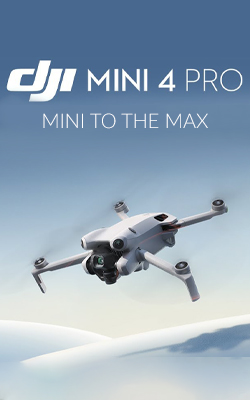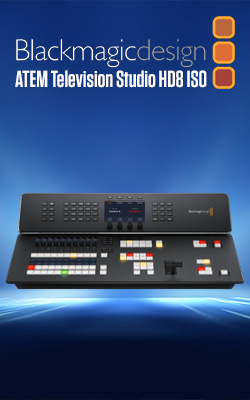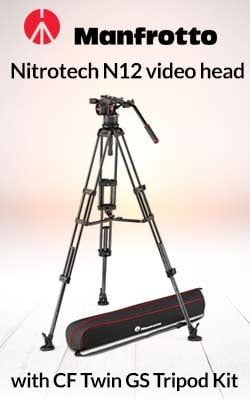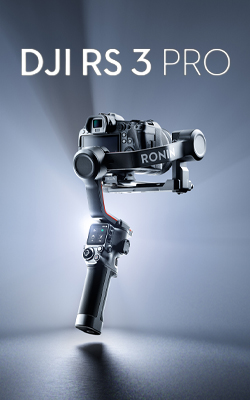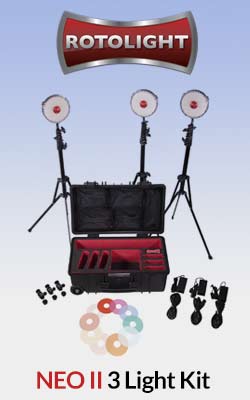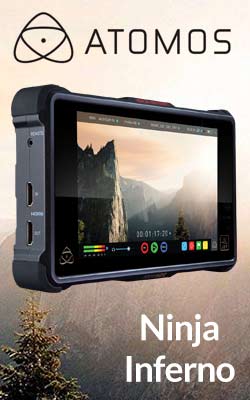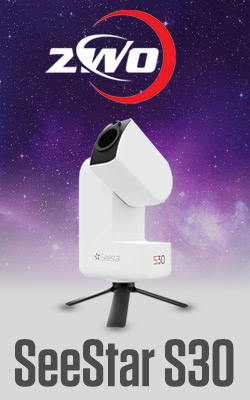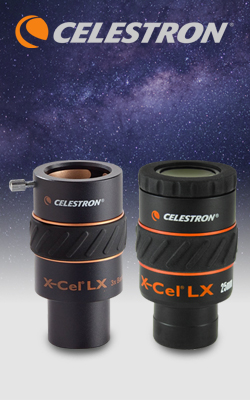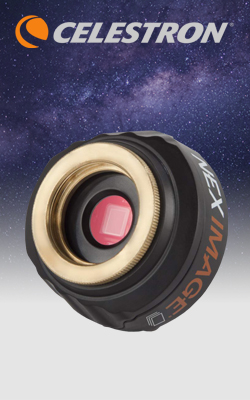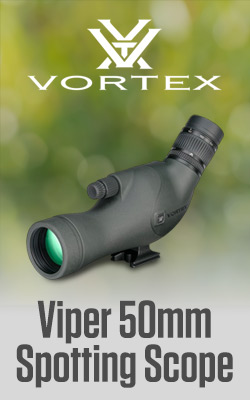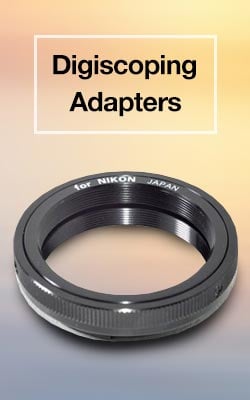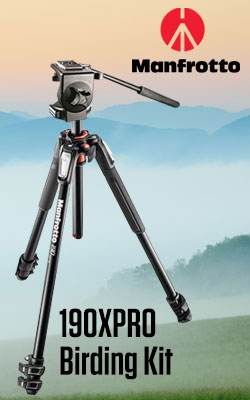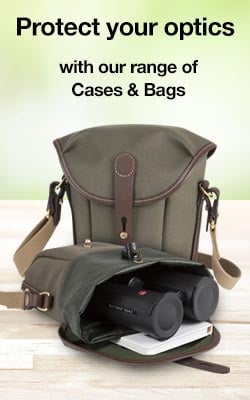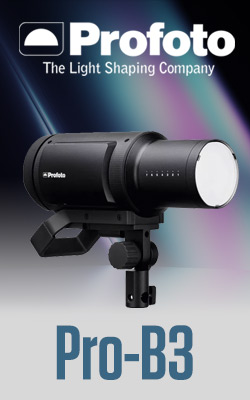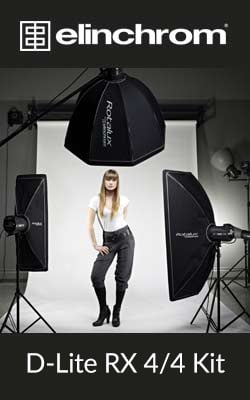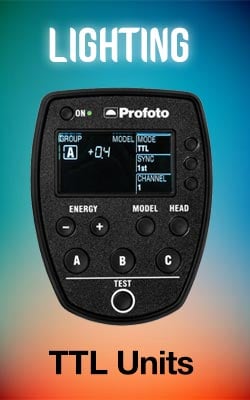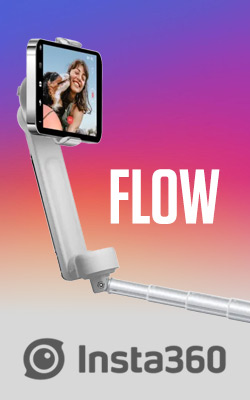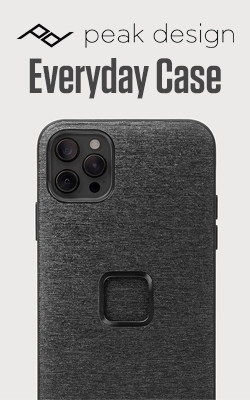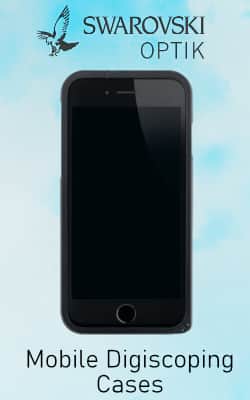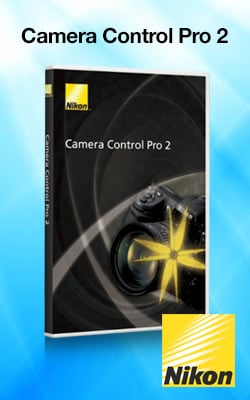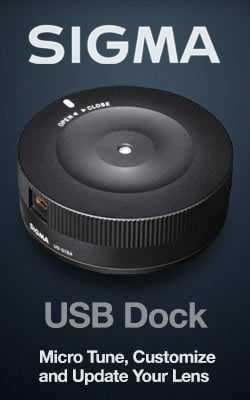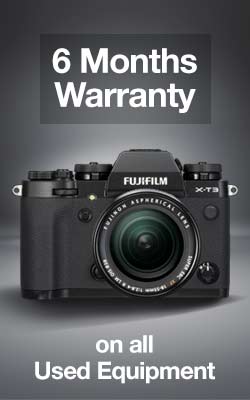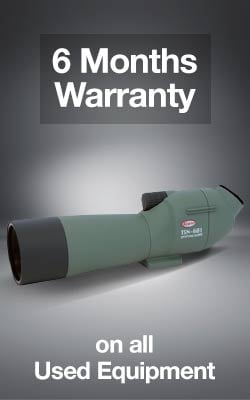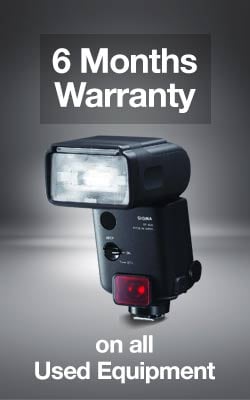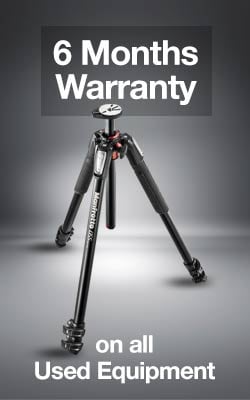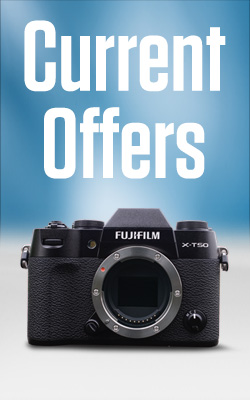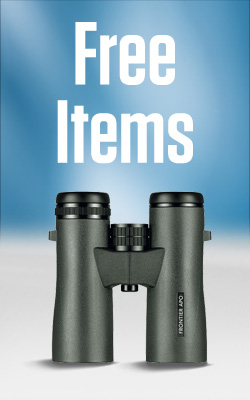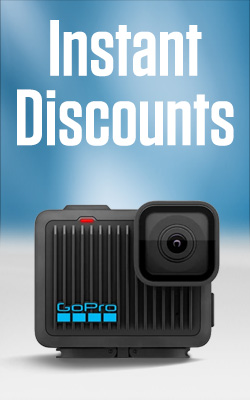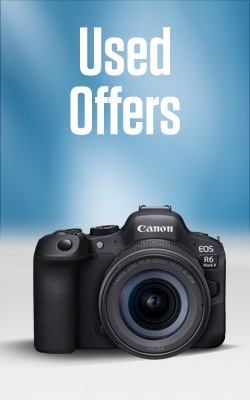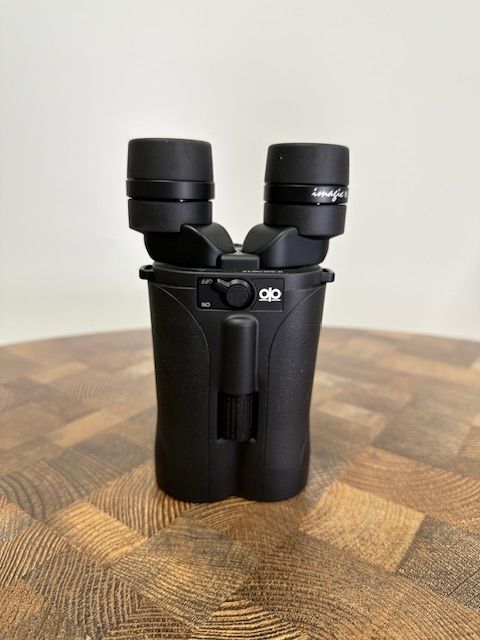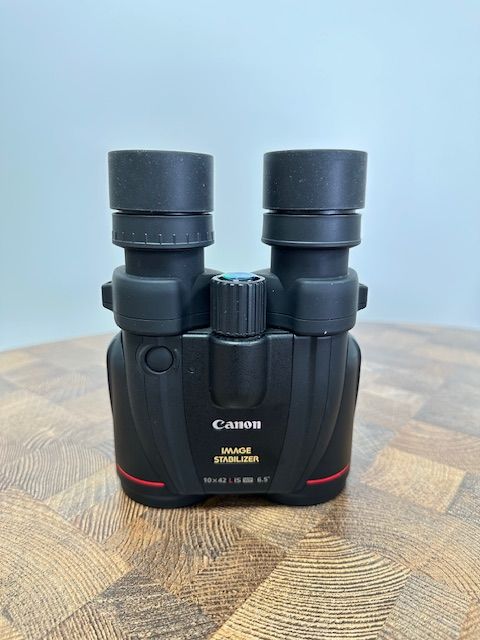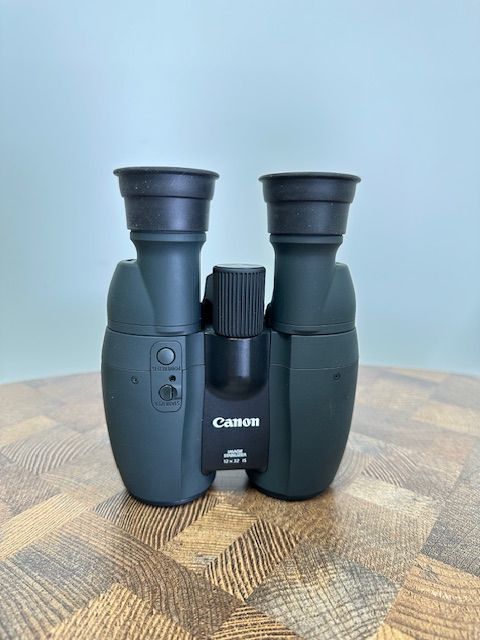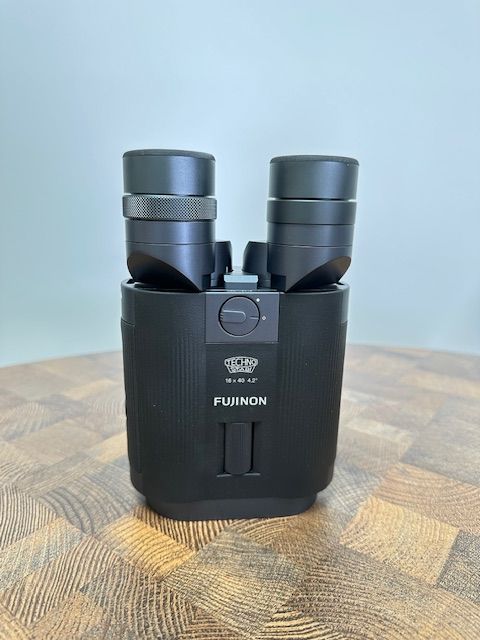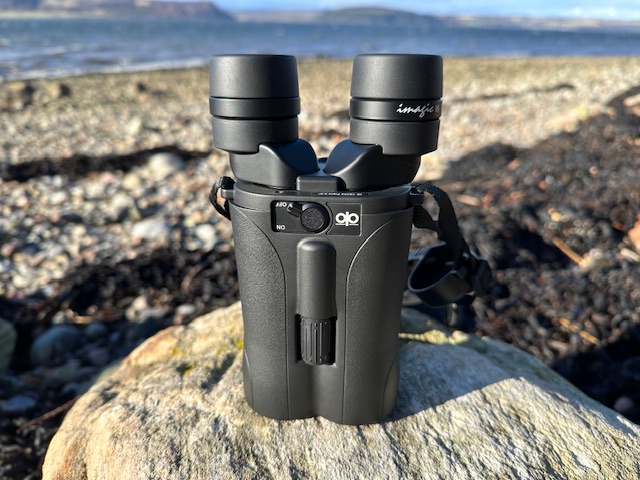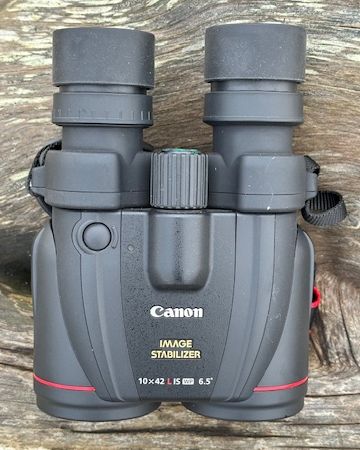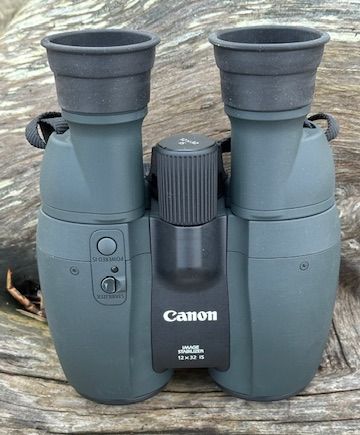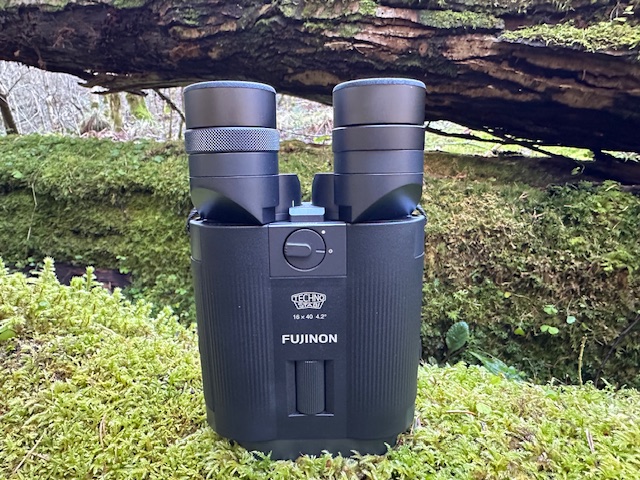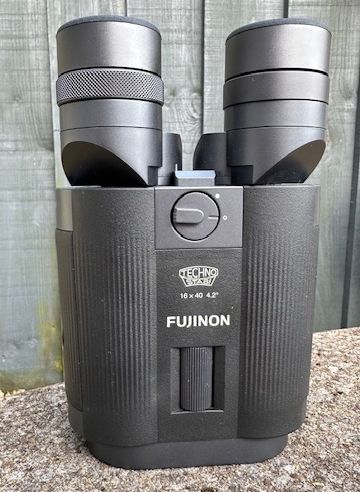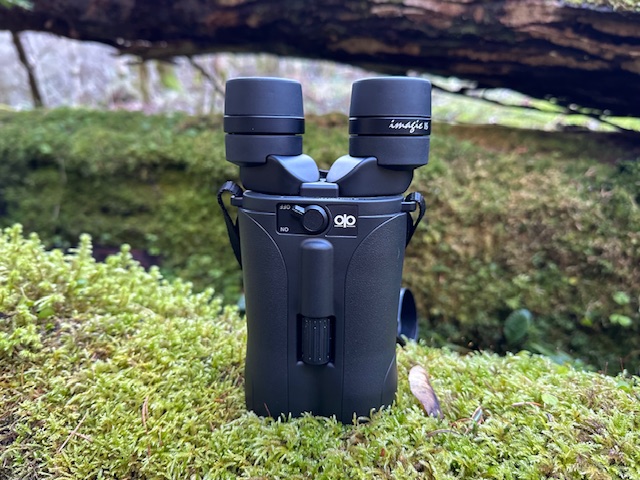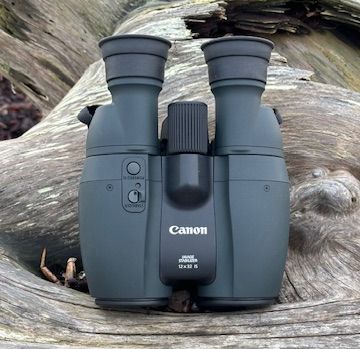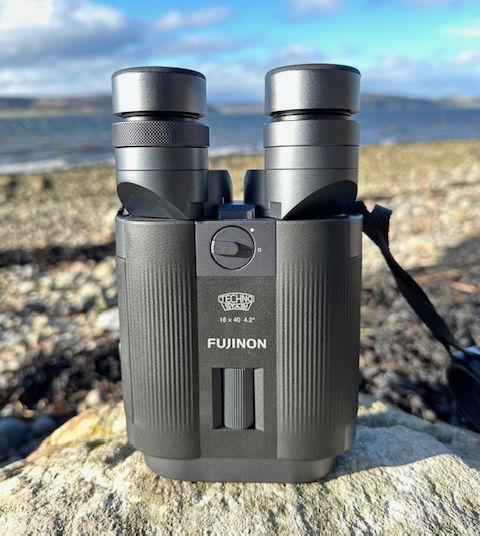Ultimate Guide to Image Stabilised Binoculars
All of us suffer from hand tremor to some degree. Most of the time, it’s at a level that’s too low to cause any issues, but there are some circumstances which tend to bring the effects to the fore – like when you’re trying to use a high-powered binocular, for example.
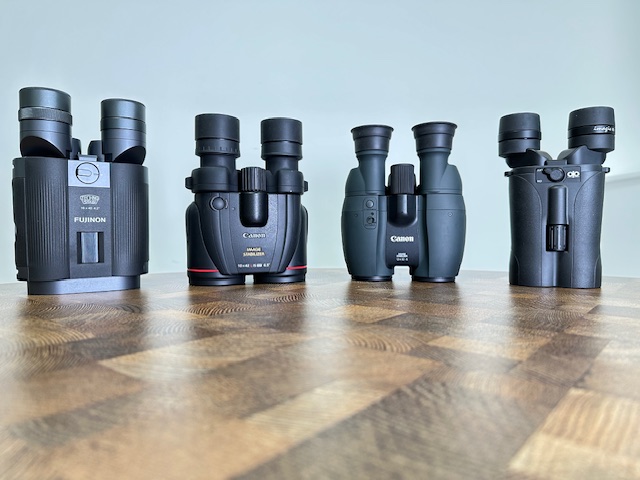
I think it’s fair to say that most people can use up to and including 10x magnification without too much trouble; however, beyond that, maintaining a steady view can be tricky to say the least.
But what if you need higher magnification? What if you crave it? What then? A spotting scope would certainly be one solution, but not everyone wants to carry a scope and tripod around. And a binocular, by definition, allows the user to use both eyes with all of the benefits that brings.
This is where image-stabilised binoculars come in and, in this blog, I’ll be looking at four offerings from three manufacturers. So, without further ado, let’s hear it for:
One potential pitfall when trying to cover several products is that anything you write can quickly turn into a (very) lengthy spec. sheet. Given that full online manufacturer specifications are readily available, I’ve opted for fairly concise technical rundowns and, within those, I’ve looked to include those factors which I think are likely to be of most interest to any potential purchaser. I’ll then spend a bit more time reporting back on my findings and conclusions after using all four under field conditions, as I think that’s likely to be the most productive approach.
Opticron Imagic IS 16x42 |
Canon 10x42L IS WP |
Canon 12x32 IS |
Fujinon TS-L1640 |
|
|
Magnification |
16x |
10x |
12x |
16x |
|
IS Degrees |
+/- 3 |
+/- 0.8 |
+/-1 |
+/- 3 |
|
Waterproof |
IPX4 |
JIS 7 |
None |
IPX7 |
|
Power |
1x AA battery |
2x AA Batteries |
2x AA Batteries |
2x AAA Batteries |
|
Weight |
640g |
1110g |
780g |
856g |
First up, the Opticron Imagic IS 16x42
Along with the Fujinon TS-L1640, this one sports the highest magnification of any of the binoculars on test. In fact, 16x magnification is pretty much getting into spotting scope territory. I can think of some spotting scope zoom eyepieces with a magnification range starting at 16x, 15x or even as low as 13x in one or two cases – so plenty of power on offer here. Objective lens diameters match the Canon 10x42L IS WP at 42mm.
The Imagic IS is easily the lightest binocular on test – weighing in at 640g. It also sports the sleekest body shape. Power is supplied by a single AA battery, and the IS will shut itself off after 10 minutes in order to preserve battery life. The eyecups are of the twist-up type and allow four stages of eye relief, so eyeglass wearers should be adequately catered for.
Opticron rates this model as IPX4, which is generally described as ‘splashproof’. This is generally taken to mean that the device will be fine in light rain, but you’d probably want to exercise a degree of caution in a torrential downpour – and submersion would definitely not be recommended! Of course, if you tend to avoid going out in torrential downpours and are not prone to dropping your prized binoculars into an aqueous environment, then this is not necessarily an issue. That all-important stabilisation is rated at +/- 3 degrees.
So there we have our quick technical rundown on the Opticron Imagic IS 16x42. I did say that I’d try to be concise, didn’t I?! Now, next up we have…
…our two offerings from Canon.
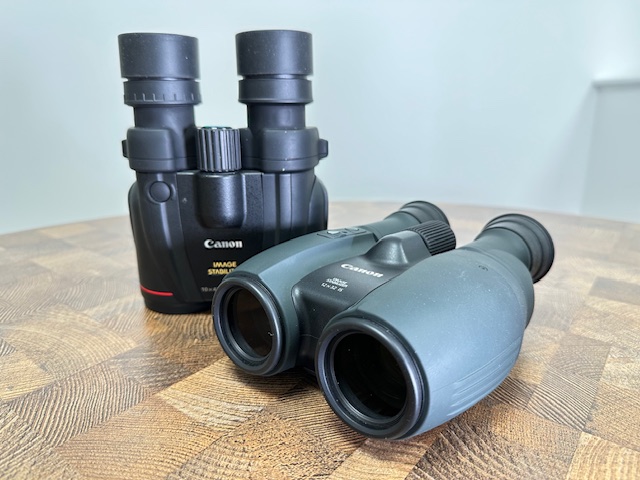
Turning to the Canon 10x42L IS WP
It’s worth noting that the ‘L’ designation is Canon’s way of identifying premium optical performance. The company uses this across its range of camera lenses, and it’s generally indicated by a red band. In the case of our test binocular, this takes the form of two red bands – one around each barrel.
The 10x42 specification (10x magnification and 42mm objective lenses) is one of the most popular combinations for binoculars of all types, whether stabilised or not. And it’s easy to see why; 10x is pretty handy in terms of magnification, 4.2mm exit pupils allows for lots of light to reach the user’s eyes, and the field of view is generally decent, too.
Whilst most stabilised binoculars tend to have magnification of 12x or above. Canon has resisted the temptation to go with higher power on its premium model, which, on the one hand, is a bold move, but this product has been around for a while and is still very popular, so there’s definitely a market for something of this type.
The 10x42L IS WP is rated as waterproof to JIS 7 level, which means that the binocular is protected to the point of being ‘immersion resistant’. Sorry folks, I lacked the courage to conduct any experiments aimed at testing the veracity of this bold claim so we’ll have to take Canon’s word for it.
Power is supplied by a brace of AA batteries and stabilisation is quoted as +/-0.8 degrees. This is less than the Opticron and Fujinon but we’re dealing with lower magnification here so, on the face of it at least, this wouldn’t necessarily be detrimental.
Eyecups are of the twist-up variety and this is the only binocular on test to feature a locking dioptre ring. Weight is quoted as 1110g which makes this the heaviest of the four by some margin and body shape is much more rounded than that of the Opticron Imagic IS, for example.
Canon 12x32 IS
The Canon 12x32 IS also tends towards more rounded contours and, as the name would suggest, delivers 12x magnification in combination with 32mm objective lenses. The relatively small objectives help to reduce physical size and weight somewhat, although this model still isn’t as sleek as the Opticron and tips the scales at a quoted 780g.
This is the only one of our quartet to feature ‘old skool’ fold-down rubber eyecups as opposed to twist-ups. This means that there are just two eye cup positions on offer – up or down with the latter generally being best if you wear glasses – whereas our other models all offer intermediate positions as well as maximum or minimum.
This isn’t an ‘L series’ model so doesn’t qualify for those distinctive red rings and doesn’t sport Canon’s UHD (Ultra-low Dispersion) elements. One feature the 12x32 IS does share with its stablemate, however, is that stabilisation is powered by two of those ubiquitous AA batteries.
The image stabiliser mechanism itself is described as a lens-shift system and is quoted as giving +/-1 degrees of stabilisation. An interesting feature with this model is that we have two stabilisation buttons - one to activate ‘General IS’ and one for ‘Power IS’ – but more on that story later.
The 12x32 IS isn’t waterproof – which might be a deal breaker for some users – but, on the face of it at least, it looked like an interesting beast and I was keen to see how it would perform in real world use.
Before moving on to Binocular No. 4, it’s worth noting that, with both Canon models, a quick press and release of the stabiliser button will keep the stabilisation active for five minutes. Holding the button down after the initial press will result in stabilisation switching off once the button is released, so there’s a nice degree of flexibility on offer here.
The new kid: Fujinon TS-L1640
OK, so finally we get to our new kid on the block: the Fujinon TS-L1640. And when I say ‘new’ I really do mean brand spanky as what we have here is a product that was only released in 2025.
TS stands for Techno Stabi, which is Fujinon’s way of referring to the built-in stabilisation. The L alludes to the binocular’s comparatively light weight (approximately 856g) when compared to Fujinon’s well-established TS-X 14x40, for example, and the 1640 tells us that what we have here is 16X magnification coupled with 40mm objective lenses.
If 16x isn’t enough, it’s worth noting that there’s also a TS-L2040 model which features – yes, you’ve guessed it – 20x magnification. Physical dimensions are the same for both models.
With regard to waterproofing, both of Fujinon’s new offerings are rated as IPX7. This means that the device can be submerged in water up to one meter in depth for up to 30 minutes. I wasn’t brave enough to try this with the Canon 10x42L IS WP, and my courage hadn’t grown by the time I took the TS-L1640 out of its box, but this feature does instil a certain degree of confidence nonetheless.
In terms of stabilisation, the Fujinon is rated as +/- 3 degrees. Fujinon offers +/- 6 degree stabilisation on its topline TS-X 14x40 model, but that is really only required for use on a boat. For land-based use (and, I’d argue, maritime use in reasonably calm conditions), +/- 3 is likely to be more than adequate.
Power is supplied by two AAA (not AA!) batteries. With regard to battery life, the manufacturer claims 30 hours’ continuous use with fresh alkaline batteries and the stabilisation is programmed to shut itself off after 60 minutes in order to preserve battery life.
Fujinon informs us that both 16x and 20x models benefit from ED (extra low dispersion) glass plus their EBC multicoatings and phase corrected prisms – all of which are aimed at reducing colour fringing whilst maximising light transmission and colour fidelity.
In terms of appearance, Fujinon’s newest offerings appear to share a fair amount of DNA with their X-series mirrorless cameras. For those who are unfamiliar with said cameras, the following image should help illustrate what I mean:
Real-World Testing
So, that’s the technical bits out of the way. Now to the important part: how did our stabilised quartet perform under field conditions?
I think it makes sense to stick with our original running order here, so first up, we have the Opticron Imagic IS 16x42...
Back to the Opticron Imagic IS 16x42
The Imagic IS is the lowest-priced binocular here by quite some margin. This, in itself, could be a major attraction but, apart from placing lower fiscal demands upon the potential purchaser, what else does this model have to offer?
Well, after field testing over a four-week period, I’d have to say that it offers quite a lot. As I mentioned at the start, this is by far the lightest binocular on test. In fact, 640g is light, even for a non-stabilised optic. I can think of a LOT of standard 8x42 and 10x42 out there that would easily catapult the Imagic IS 16x42 out of a set of old-fashioned kitchen scales. This is achieved partly through the use of polycarbonate in the body and that reduction in weight is accompanied by a reduction in size, too: this really is a sleek, slim little binocular.
Of course, it’s one thing being built for speed but that’s no good if optical performance isn’t up to scratch. Fortunately, that’s not the case here. The first thing I would say is that I was surprised at just how much I liked having 16x magnification. My regular binocular is 8x and, being a birder first and foremost, I’ve always favoured the ‘bins and scope’ combination, switching to the spotting scope whenever more power is required.
I’m not sure that I’ll be ditching that combo anytime soon but there was no denying the fact that having 16x magnification in binocular form definitely has its advantages. One such advantage is that you have a fair amount of optical power at your fingertips without having to lug a tripod around and this feature alone soon led to the Imagic IS beginning to ingratiate itself.
Whilst I wasn’t expecting this binocular to have quite the sparkle of the Canon 10x42L, for example, there’s no doubt that this is a very capable performer in its own right with the significant benefit of noticeably higher magnification. Brightness and field of view, whilst clearly going to be less than what we’d see with a 10x binocular, were surprisingly good and I was impressed at how well the little Opticron controlled colour fringing.
After putting the Imagic IS through its paces, I would say that, if there was a prize for punching above your weight (which there isn’t, by the way), it would have to go to our friends at Opticron. The binocular doesn’t have quite the same feeling of solidity as the Fujinon (which is still waiting in the wings so that’s a bit of a spoiler) and we don’t have full waterproofing but, if you need high magnification combined with lightweight construction and don’t want to break the bank, then this model might well float your boat.
Next up is the Canon 10x42L IS WP
It’s fair to say that I had great expectations with this one. Anything that sports those distinctive red rings around the barrels is pretty much setting out its stall right at the start.
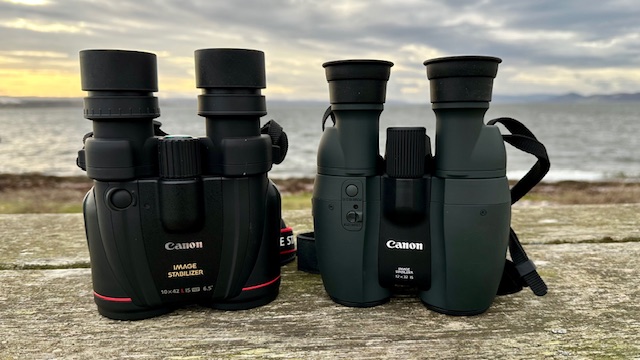
And this is an impressive, high quality instrument on several fronts. With the biggest exit pupil and widest field of view of any of the test binoculars, what we get here is a very bright, sharp, clean image with the added benefit of image stabilisation. Colour fringing is negligible and I detected a definite air of robust build quality coupled with a certain degree of refinement emanating from this model right from the off.
We’re tipping the scales at well over a kilogram with Canon’s prime mover. On paper, that’s pretty heavy but, in the field, I was quite surprised to find that the weight didn’t feel excessive at any point. This may well be down to how the binocular balances in the hand, as that can definitely have an effect on perceived weight. And the view is extremely steady, of course, by virtue of the very effective onboard IS. This is definitely a premium product and, straight out of the box, you can tell.
If 10x magnification is all you need but a steady, high quality image is paramount, then the Canon 10x42L IS WP is likely to tick all the boxes. But what of its stablemate, the Canon 12x32 IS? How does that fare in comparison?
Canon 12x32 IS
In some ways, this binocular reminded me of the Opticron Imagic IS, albeit without the latter’s high magnification. It did everything pretty well, and the view at 12x with stabilisation engaged was very steady indeed. In terms of optical performance it didn’t have quite the sparkle of the 10x42L IS WP - and I would say that there was more discernible chromatic aberration on view than with the other three models on test – but still a very capable and versatile observation tool.
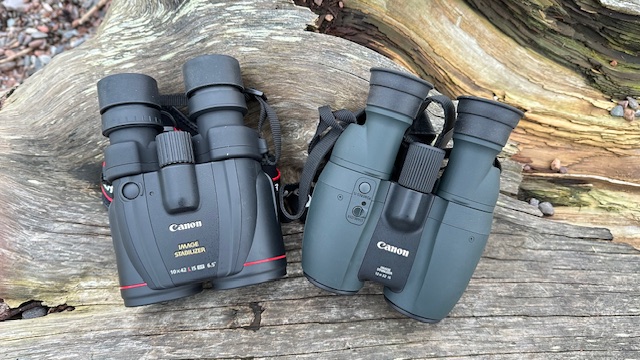
The body shape is quite distinctive (as can be seen from the photos) and is topped of by those two stabilisation buttons I mentioned earlier. These allow the user to activate what Canon calls General IS and Power IS.
The idea is that General IS has been optimised for panning, whilst Power IS is best for scrutinising a static subject. Having spent a considerable amount of time switching back and forth between the two modes, my personal experience was that Power IS did appear to have an edge when viewing anything that was stationary, but, try as I might, I just couldn’t see any discernible difference between the two modes when panning. I haven’t read any other reviews of this model so I don’t know if others have made similar comments but I just couldn’t see the difference. There were times when I think my brain was trying to convince me that General IS was better when panning but then I’d switch back to Power IS and it would seem identical. So, in summary, still not sure on that one.
Slight question mark over stabilisation modes aside, if you’ve been using a 10x binocular fairly happily but feel you need just a bit more power, then the 12x32 IS might well be the one for you.
The Fujinon TS-L1640
So, three down and one to go. Last, but by no means least, we have our newbie waiting in the wings: the Fujinon TS-L1640.
Straight out of the box, the first things I noticed with this instrument were:
(a) A definite feeling of solidity (although, at 856g, the TS-L isn’t particularly weighty)
(b) The sheer beauty of the finish. There’s definitely more than a whiff of the Fujifilm X-Series camera about this one!
Made in Japan with a waterproof rating of IPX7 (capable of withstanding being submerged to a depth of one meter for up to 30 minutes) the Fujinon might be last on our list but certainly comes out fighting!
I’m going to cut straight to the chase here – I loved this binocular. Build quality apart, the combination of high magnification and premium optics just made it a joy to use. In essence, what the TS-L1640 brings to the table is the power of the Opticron Imagic IS coupled with the premium optical performance of the Canon 10x42L IS WP.
Fujinon has always made great glass and it really came to the fore here: a surprisingly bright (given the high magnification), very sharp, clean and natural-looking image with minimal chromatic aberration.
Observing waterfowl in the Moray Firth as the light began to fade, I was struck by the richness of the colours I was seeing, even in less-than-ideal light conditions. A work colleague who tried the binocular commented that she liked the fact that the stabilised view still feels very natural. On the face of it, this might seem like a slightly abstract concept but, having used the binocular pretty extensively, I would agree.
This is one of those optics that encourages you to forget that you’re looking through glass.
Perhaps more than with any of the other bins on test, using the TS-L1640 felt increasingly like carrying a small spotting scope around. But without the added weight and bulk of scope and tripod combined. I think Fujinon has hit a home run with this one, and it will be interesting to see how both this model and its sibling, the TS-L2040 are received.
Why buy image stabilised binoculars?
So, having covered off my thoughts on all four offerings, what can I say about the overall benefits of image stabilising binoculars?
Whilst I don’t think that IS Binoculars are likely to completely take over from their non-stabilised counterparts, once you’ve experienced a good, stabilised bin, there’s no denying the benefits. To the point where it makes going back to your everyday non-stabilised binocular something of a wrench. If your interest is birds/nature, the night sky, aviation or sport, for example, you’re likely to derive benefit from that wonderfully steady image.
I own a couple of non-stabilised binoculars but, a few years back, I reviewed the older version of Fujinon’s current flagship TS-X 14x40. It wasn’t the world’s most ergonomically pleasing binocular but one of the things I loved about it was the way it allowed me to follow a flock of birds in flight and even home in on a particular bird with ease. This is something I’d never seen any manufacturer comment on (and I mentioned this at the time) so, being a keen birder, I was keen to deploy all of our test binoculars in this way.
Which I did. To great effect. Living close to the coast has many advantages when wildlife is your thing. Fast-moving flocks of waders twisting and turning over the sea proved to be ideal for putting our stabilised quartet to the test and, with IS engaged, all proved to be adept in this regard.
As per above, this isn’t something manufacturers tend to mention but, for me, the ability to follow these aerial manoeuvres with such ease is one of the biggest plusses of a stabilised binocular. A mixed flock of Sanderling, Ringed Plover and Dunlin proved to be the perfect subject matter in this regard; homing in on any particular individual was quick and easy and it occurred to me that the chances of being able to pick out something unusual amongst the commoner species could only be enhanced by any of the optics on test.
The benefits of 16x magnification
With regard to the two 16x models in particular, I also discovered a couple of other benefits to having that extra power at my fingertips. The first one would be the ability to scan ahead. You can scan ahead with any binocular, of course, but the extra reach means that you can scan further and, consequently, greatly reduce the chances of flushing anything of interest. Walking along the bank of a river or stream, looking for species like Kingfisher or Dipper, would be one scenario where having this enhanced ability might come into play.
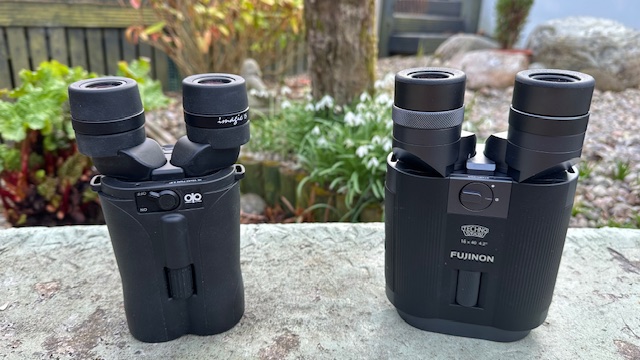
I can also see benefits for anyone with an interest in insects. Carrying out my field tests in the Scottish Highlands in February meant that insects were thin on the ground (to put it mildly) but I can see how the extra power could be extremely useful for anyone with an interest in butterflies, moths, dragonflies of damselflies as there’s increased potential for close-up views without your shadow or air movements disturbing the chosen subject. Something to put to the test later in the year, methinks.
Can you use image stabilised binoculars for astronomy?
I used all four models to view the night sky and, straight away, it was easy to see why this type of product is becoming increasingly popular with astronomers. The views of the waxing crescent Moon through the TS-L1640, in particular, were truly stunning and I found the 10x Canon to be particularly pleasing for really nice panoramic views of our winter constellations.
Final thoughts
Having four very different (and very nice) stabilised binoculars to compare has definitely been an interesting and illuminating experience. But what are my final conclusions?

Well, firstly, I can confirm that all of these binoculars feature very effective image stabilisation systems. In other words, you can tell straight away when stabilisation has been activated or deactivated, and the effect is quite dramatic.
Traditionally, IS has been associated with higher-powered instruments, so it was interesting to gauge the effect with a more traditional magnification like 10x, for example. Which model you go with will, ultimately, depend on what your intended use is likely to be. Given that my main interest is birding, the two 16x were probably the ones that gave me something over and above my regular binocular, but I think it would be possible to make a strong argument for each member of our quartet.
It also occurred to me that all of these models could be of interest to wildlife photographers in particular: very useful for locating potential subjects. The stabilisation makes each of these binoculars easy to use one-handed, which could also help in this regard. In fact, Fujinon has acknowledged this by including two straps with its TS-L binoculars: there’s a conventional neck strap, but they also include a hand strap that allows the binocular to be used in ‘camcorder’ mode…if you get my drift.
As I said above, I don’t think stabilised optics are likely to completely replace non-stabilised anytime soon but if you’ve never experienced the effect of IS first-hand, it’s definitely worth checking out. It may just change the way you think about what you want in a binocular.
So that concludes our dive into the world of stabilised binoculars. Hopefully, there are some useful nuggets of information contained herein and as always, thank you for reading.
Convinced yet?
The binoculars in this blog are available here:
Read next
- Fujinon Binocular Review: HC 8x42 & Techno-Stabi Stabilised Binoculars
- Ultimate Smartoscope Vario-Adapter Review
- Review Nikon Monarch M5 and M7 Binoculars
Thank you!
Thanks for taking the time to read our blog, we really do hope they help you out and answer some of your questions. If you still have some unanswered, then please feel free to get in touch with our team of experts.
We have a LiveChat option on our website and we can, of course, be contacted via our email, we're also on the end of the phone too! Read more on how to contact us here >
Want to write for us?
If you've got experience with producing content on photo, video and/or optics products or techniques then we would love to hear from you. Contact our blog editor, Bea, with a sample of your work at [email protected].
- By Martin Drew
- 5 Jun 2025


